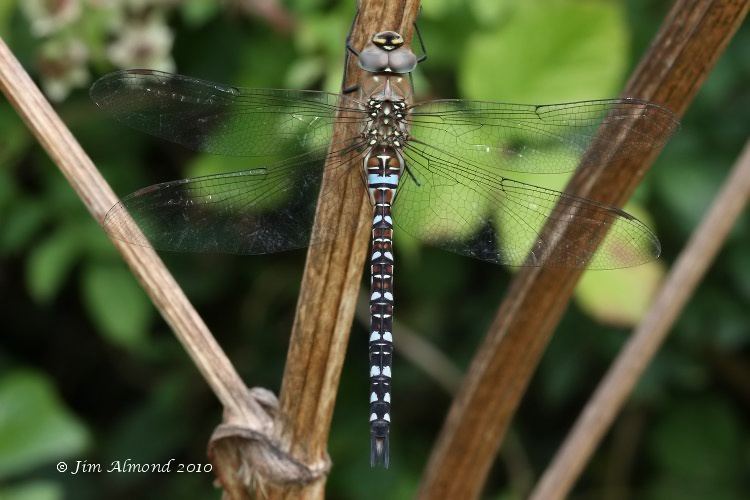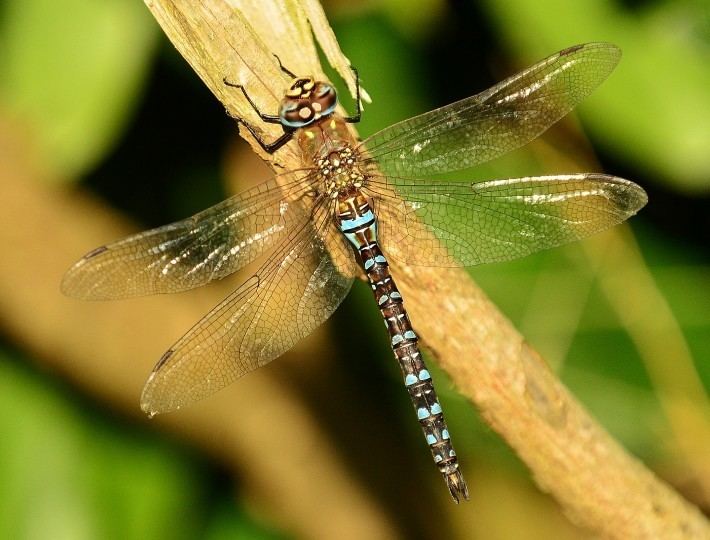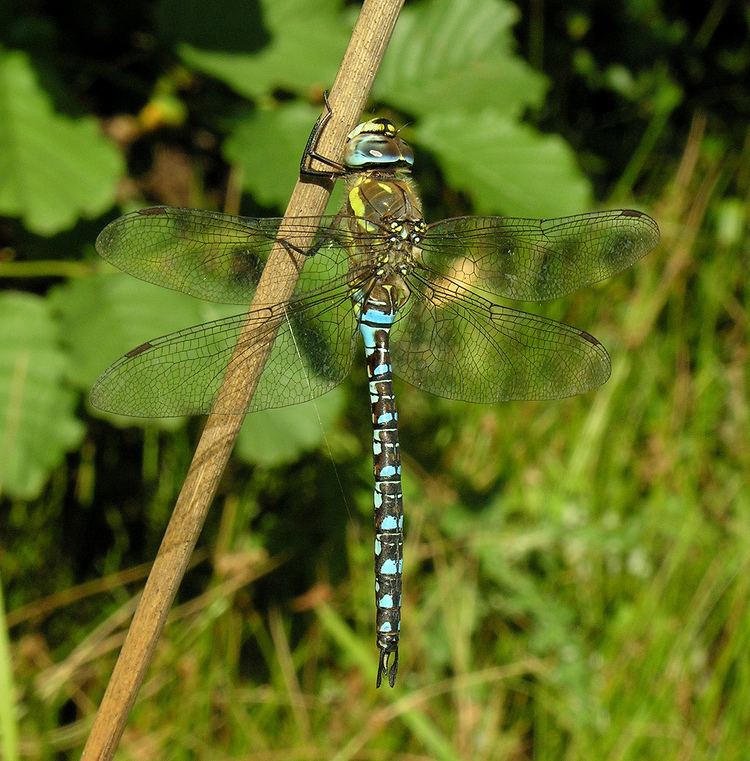Family Aeshnidae Scientific name Aeshna mixta Rank Species | Suborder Anisoptera Genus Aeshna Higher classification Aeshna | |
 | ||
Similar Aeshna, Odonate, Southern hawker, Common darter, Dragonfly | ||
Migrant hawker dragonfly aeshna mixta
The migrant hawker (Aeshna mixta) is one of the smaller species of hawker dragonflies. It can be found away from water but for breeding it prefers still or slow-flowing water and can tolerate brackish sites. The flight period is from July to the end of October. A. mixta occurs in North Africa, southern and central Europe to the Baltic region.
Contents
- Migrant hawker dragonfly aeshna mixta
- Brown hawker eats migrant hawker
- Identification
- Distribution and habitat
- Behavior
- References

Brown hawker eats migrant hawker
Identification

A. mixta is a small aeshna which appears dark in flight. It is similar in appearance to other aeshnas but has a characteristic "golf-tee" shaped mark on the second segment of the abdommen (S2) which is diagnostic. In flight it looks like a small Emperor dragonfly with a blue abdomen which, when seen from the side, curves down. The main identification problem in the field is distinguishing this species from A. affinis where the two species fly together. The markings on the side of the thorax are different in A. affinis and A. mixta. In A. affinis the sides of the thorax are greeny yellow with fine black lines along the sutures. In A. mixta the sides of the thorax are similar in colour but the yellow is separated by dark brown areas so it gives the appearance of having two broad yellow stripes.
Distribution and habitat

A. mixta is found throughout central and southern Europe, north Africa, the Middle East and across Asia to China and Japan. As it is a migratory species it can occur outside its normal range and in recent years it has been spreading northwards. For example in the United Kingdom this insect was rare until the 1940s when it began migrating from the continent in large numbers. It continues to do so and is now a resident breeding species throughout England and Wales. It reached the Isle of Man in 1998 and Ireland in 2000. It breeds in lakes and ponds and is tolerant of brackish water. It is also found away from water hawking high amongst trees and bushes, but often resting low on vegetation. A specimen was discovered in early August 2011 adjacent to a riparian park in Calgary, Alberta.
Behavior

A. mixta has been seen on the wing in all months of the year but most commonly from July to Late October or early November. After emergence, the immature adults fly away from water and spends their time feeding and becoming sexually mature. They are not territorial and they are often seen feeding or resting in groups, occasionally forming large feeding swarms. They can be found around trees and bushes quite high up. Once mature, they return to water and begin mating behaviour with the males patrolling looking for females. A. mixta males are less territorial than other male aeshnas. Males form a tandem pairing with a female on the wing and copulate. After mating the male and female split up and the female oviposits alone. The eggs develop and then enter dipause and it is as diapause eggs that A. mixta overwinter. In spring the eggs hatch into a prolarva which only lasts from a few seconds to a few minutes, the prolarva then molts into a stadium 2 larva. Larval development is rapid and adults emerge in summer. A. mixta is a univoltine species, that is to say that it completes its life-cycle in one year.
